Which time period has the highest blood pressure in hypertensive patients, and how to pay attention to lowering and controlling blood pressure?
Controlled by the body's hormones and biological clock, our blood pressure shows a pattern of "two peaks and one trough" during the day:
Early in the morning, between 6:00 and 10:00 a.m., blood pressure rises significantly, with a first peak and then falls;
Between 17:00 and 18:00 p.m., blood pressure rises from again to a second peak and then falls;
Between 2:00 and 3:00 p.m., blood pressure drops to a minimum, showing a significant trough.
Of these two blood pressure peaks, the early morning blood pressure is the most significant warning.In normal people, the high and low pressures in the early morning will increase by 10% to 20% compared with the sleeping time. For hypertensive patients, poor blood pressure control and low blood concentration in the morning after 24 hours of drug consumption can increase the magnitude of blood pressure increase in the early morning.
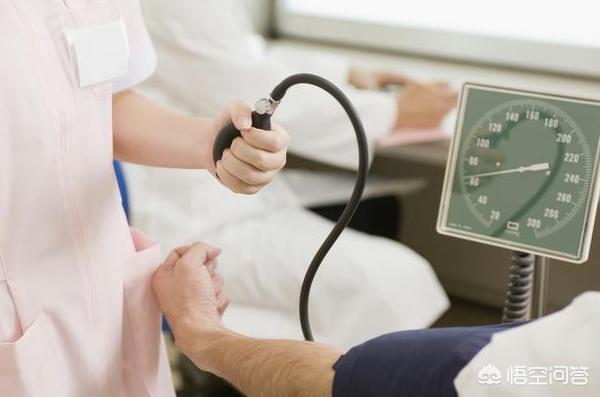
Early morning: peak time for fatal events in hypertensive patients
Early morning blood pressure is not controlled in about 60% of our hypertensive patients. Long-term early morning high blood pressure will bring serious damage to the heart, brain, kidneys and blood vessels. In general, early morning hypertension:
- It can cause myocardial hypertrophy and increased myocardial oxygen consumption, and is the primary risk factor for a high incidence of cardiovascular events. Surveys show that about 40% of myocardial infarctions and 29% of sudden cardiac deaths occur in the early morning hours;
- It is the strongest independent risk factor for stroke, with the incidence of stroke at this time of day being three to four times higher than at other times of day;
- It can lead to structural lesions or functional changes in the vasculature, inducing asymptomatic atherosclerosis and carotid intima-media thickening plaques. Data show a fivefold increase in the relative risk of carotid atherosclerosis in patients with early morning hypertension;
- It will aggravate the renal function damage of chronic kidney disease patients and cause proteinuria, etc.
How to Reduce Early Morning High Blood Pressure
1. Adjustment of medication
Choose 24-hour long-acting antihypertensive drugs to ensure that the effective drug concentration in the blood is up to standard in the early morning. In addition, according to the blood pressure in the early morning and at night, you can adjust the time of taking medication under the guidance of your physician. For example, change the time of taking medication to 4-6 p.m. to ensure that when you wake up in the morning, the concentration of effective medication in your body can control the high blood pressure in the early morning.
Remember! Do not change the time of taking your medication on your own! To avoid low blood pressure at night.
2. Don't get up too hard
Getting up too quickly and sudden muscle contractions can cause a sudden rise in blood pressure. It is recommended that when you wake up, you lie in bed for 2 minutes, then sit and stand for 2 minutes, then sit on the edge of the bed for about 1 minute, and finally stand up and move around. Elderly people should pay special attention to the fact that activities should not be too intense after getting up, and should gradually transition from a small amount to daily work life.
3. Drink some water in the morning to dilute the blood.
The water in the body evaporates after a night of consumption, and the blood becomes more viscous and prone to forming blood clots. After getting up in the morning, you can drink a large glass of warm water, can relatively quickly dilute the viscous blood, greatly reducing the probability of stroke and myocardial infarction.
4. Solve constipation problems or delay defecation time to avoid too much force in defecation
Forceful defecation, will increase abdominal pressure, blood pressure rises faster, if at the same time have high blood pressure early in the morning, the two a superposition will make the blood pressure spike, the small arteries in the brain may be due to excessive force and rupture bleeding.
If you suffer from constipation, do not over exert yourself or hold your breath when having a bowel movement, delay the bowel movement or use a stool softener first. In your diet, you can eat more vegetables and fruits that are rich in crude fiber. For prolonged constipation, it is recommended to see a doctor.
5. Avoid morning exercise
Morning exercise, especially strenuous exercise, is dangerous for patients with early morning hypertension. Therefore, strenuous activities should be avoided from 6:00 to 10:00. Patients who must exercise in the morning can take short-acting antihypertensive drugs, such as nifedipine generic tablets, under the guidance of a physician to bring down their early morning blood pressure.
6. Lifestyle habits should be continuously improved
Two notes:(1) Pay attention to maintain adequate sleep, research found that patients with severe insomnia and sleep apnea syndrome, early morning blood pressure is more likely to rise, control of these diseases can help reduce early morning blood pressure. (2) Pay attention to maintain emotional stability, emotional excitement will make the sympathetic nerves excited, elevate the heart rhythm to raise blood pressure.
Three perspectives:Adhere to regular medication, blood pressure measurements, and regular follow-up appointments.
Four limitations:Limit tobacco and alcohol, limit exercise intensity, limit salt intake to less than 6 grams per day, and limit fat and carbohydrate intake.
The above content is edited and organized by "ask the doctor" for you, want to know more authoritative health knowledge, welcome to pay attention to us!
A person's blood pressure fluctuates between day and night, usually with two peaks and one trough, which is why it is graphically referred to as "spoon-shaped blood pressure". This blood pressure fluctuation is characterized by two blood pressure peaks around 8-9 a.m. and 5-6 p.m., and a glucose trough around 2-3 a.m. The lowest blood pressure during the night is reduced by about 10-20%, or 10-20 mmHg, compared with the highest blood pressure during the day.
Many patients with high blood pressure fluctuations, will also show this "double peaks and valleys" law, but the amplitude of blood pressure fluctuations will be much more than 20 mmHg. This is the main reason why hypertensive patients are prone to myocardial infarction in the early morning and stroke in the morning. In addition to the abnormally high blood pressure, hypertensive patients are also prone to large fluctuations in blood pressure, which are related to the impaired function of vascular elastoreceptors in these patients and the decreased ability to regulate blood pressure.
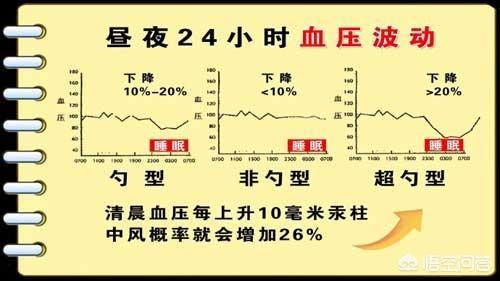
Because of this, many experts recommend that people with high blood pressure are able to choose a long-acting antihypertensive medication to manage their blood pressure throughout the day. This means getting up every morning and taking a once-a-day blood pressure lowering regimen of long-acting antihypertensive medications at around 7:00 am. These long-acting antihypertensive medications usually last for more than 24 hours, which can effectively prevent blood pressure from rising too high too fast during the day, and keep it from dropping too low at night, thus keeping the daily fluctuations in blood pressure from being too great.
Of course, there is "spoon blood pressure" and there is "non-spoon blood pressure". Especially some hypertensive patients with special underlying diseases, such as renal disease hypertension patients, "non-scoop blood pressure" is more common, their nighttime blood pressure is sometimes higher than the daytime blood pressure. This requires adjusting the variety, dosage form and duration of antihypertensive medication in order to better manage the blood pressure of these patients.
In general, each hypertensive patient is different due to the basic condition of his body, the underlying diseases he suffers from and the medications he takes. As a result, their blood pressure fluctuations during the day present a wide variety of characteristics, so modern medicine puts special emphasis on personalized antihypertensive programs. That is to say, according to the characteristics of each person's blood pressure, adjusting the various measures of antihypertensive treatment.
Therefore, for ordinary hypertensive patients, the best way to combat hypertension is to measure their blood pressure more often, communicate with their doctors about their fluctuating blood pressure, and take their medication strictly according to the doctor's instructions.
Our body's blood pressure is not constant throughout the 24 hours of the day, but fluctuates with circadian changes. This fluctuation of blood pressure with the circadian rhythm is known as "Circadian rhythm of blood pressure".
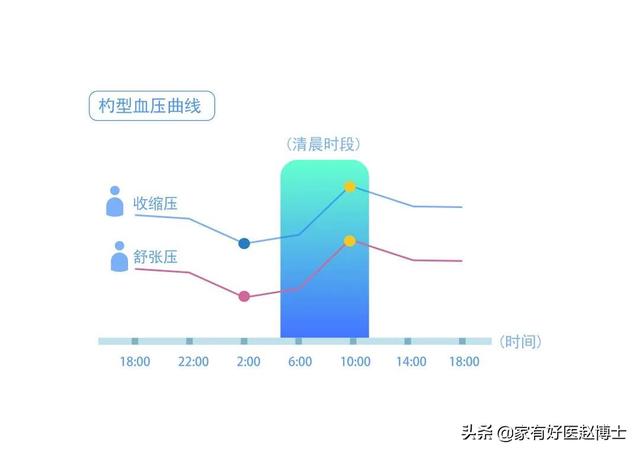
The circadian rhythm of blood pressure in hypertensive patients is often associated with the risk of cardiovascular events, and, adjusting the timing of medication to the circadian rhythm of hypertension is important in the management of hypertension!
Normal blood pressure rhythm: daytime high, nighttime low, two peaks and one trough
Before we understand the circadian rhythm of hypertension, we need to figure out the circadian rhythm characteristic of normal blood pressure, which is: "day high, night low, two peaks and one valley".
- Daytime high and nighttime low: average blood pressure is higher during the day than at night;
- (a) Two peaks: There are two "peak" times for blood pressure during the day, from 8 to 10 a.m. and from 4 to 6 p.m. The peaks are often higher in the morning than in the afternoon. Often the peak blood pressure is higher in the morning than in the afternoon;
- A valley: At night, from 0 to 3 a.m., blood pressure reaches its lowest point of the day.
This normal circadian rhythm of blood pressure makes the curve of blood pressure changes during the day similar to a ladle shape, and therefore, this is known as "Arytenoid blood pressure".
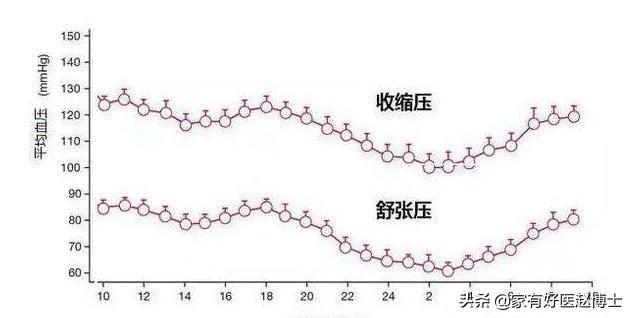
In most hypertensive patients, the circadian rhythm of blood pressure has not changed significantly and is still characterized by "aryepiglottic blood pressure".As a result, there are two peaks of blood pressure in the morning and afternoon, respectively, while at night blood pressure will be at a lower level.
And that's why.Most hypertensive patients take their blood pressure-lowering medications in the morning after rising in the morning, which allows for a higher blood concentration of the medication during the daytime, which has a stronger inhibitory effect on the peak phase of blood pressure; and a low concentration of the medication at night, which does not make the nighttime blood pressure too low。
However, not all hypertensive patients have a "ladle-shaped" blood pressure.
Non aryepiglottic blood pressure, anti aryepiglottic blood pressure
Ambulatory blood pressure monitoring technology has led to a better understanding of the characteristics of nocturnal blood pressure fluctuations in hypertensive patients.
In normal arytenoid blood pressure, nighttime blood pressure should drop by about 10% to 20% compared to the average daytime blood pressure. However, studies have found that some hypertensive patients have less than a 10% drop in nighttime blood pressure compared to daytime blood pressure, a condition known as "Non-Arylated Hypertension"; and what's more, some hypertensive patients have even higher blood pressure at night than during the day, a condition known as "Antipyrine hypertension".
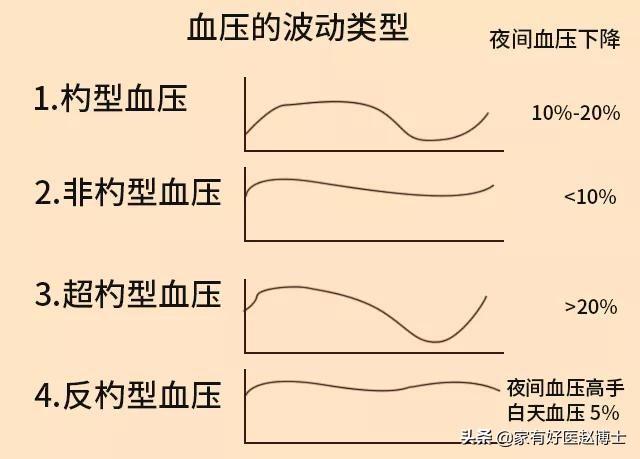
Increasing age, poor sleep quality, low daytime activity, nocturnal sympathetic arousal, sleep apnea syndrome, and vascular endothelial disorders have been found to be associated with non-arteritic as well as anti-arteritic hypertension.
In contrast, non-aroused hypertension, as well as anti-aroused hypertension, may have these effects compared to hypertension with a normal circadian rhythm:
- Acute coronary syndrome, acute myocardial infarction, stroke, etc.Higher risk of cardiovascular events;
- more likely causeventricular remodelingoccurrenceLeft heart diastolic dysfunctionetc;
- More likely to have heart, brain, kidney, eye, etc.target-organ damage;
- There may also be an increase inwhite matter lesionsas well ascognitive impairmentof risk.
This is especially true for patients with inverse arytenoid hypertension, whose peak blood pressure occurs at night during the day, which often results in causing more serious consequences than non-arytenoid hypertension.
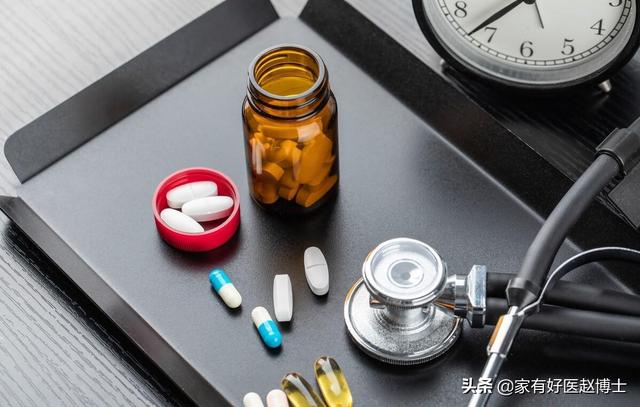
For the treatment of inverse arytenoid hypertension, it is necessary not only to lower the blood pressure, but also to correct the circadian rhythm of blood pressure and change it to an arytenoid patternFor example, by rescheduling antihypertensive medication to bedtime or adding a short-acting antihypertensive medication to help bring down nighttime spikes. For example, by rescheduling antihypertensive medication to bedtime or by adding a short-acting antihypertensive medication to help bring down nighttime blood pressure spikes. In addition, diuretics are considered to be more appropriate for the treatment of reflux hypertension.
To summarize, there is a circadian rhythm in blood pressure. Normally, the peak blood pressure should be in the morning and afternoon, while some hypertensive patients have peak blood pressure at night, even higher than during the day, which is non-aristotelic or anti-aristotelic type of hypertension. The treatment of this type of high blood pressure not only needs to lower blood pressure, but also to correct the circadian rhythm of blood pressure. This is most commonly done by adjusting the type of medication and the time of day it is taken.
Okay, follow "Dr. Zhao, the Family Doctor", please share these medical tips with friends who need them!

During the day, the general pattern of blood pressure is "two peaks and one valley", with the first peak during 6:00 to 10:00 in the morning, the second peak during 16:00 to 20:00 in the afternoon, and the obvious trough during 0:00 to 4:00 at night. The circadian blood pressure rhythm of the elderly in addition to the "two peaks and one valley", there is a trough at 12 to 14 pm, manifested as "two peaks and two valleys". The specific time point at which the highest blood pressure occurs is different for each person and may vary from day to day.
Generally speaking, waking up early in the morning is when blood pressure is most likely to rise.
This is because, between sleep and wakefulness, the dominant control of our body's nervous system is different. Awakening from sleep, the body's dominant nervous system from the vagus nerve for the sympathetic nerve, sympathetic nerve excitation, can contract blood vessels, increase the heart rate, increase myocardial contractility, which will make the blood pressure rise; early in the morning, the body is a variety of hormone secretion and release of time, but also can elevate blood pressure.
(I'm Luo Min, chief physician of a Grade 3A hospital, with more than 30 years of clinical experience in the first line of work of the "old" doctors, my efforts only to harvest everyone's approval, if my answer can help you, I hope you can like, attention, if you have any questions, you can comment or private message me, I will try to help everyone!)

Hypertension has now become a very common disease, and as people's health awareness increases, lowering and controlling blood pressure has become a focus of attention for many people.

Blood pressure is not static, it is always changing throughout the day. After people's research found that the blood pressure will appear two peaks and one trough in a day, referred to as double peaks and one trough, and because of its 24-hour change curve like a wooden spoon, Gu also known as the "spoon curve". The first peak of blood pressure occurs in the morning between 8:00-9:00 a.m., the second peak occurs in the afternoon between 18:00-20:00 p.m., and the trough occurs in the early morning between 2:00 and 3:00 a.m.
The double peaks and valleys of blood pressure changes in hypertensive patients are not the same as those of normal people, and some patients' blood pressure "valleys" appear during the day, while "peaks" are formed at night, which explains why some hypertensive patients have cerebral hemorrhage, cerebral infarction and other diseases late at night. This also explains why some hypertensive patients develop cerebral hemorrhage, cerebral infarction and other diseases late at night. The purpose of lowering and controlling blood pressure is not only to control the blood pressure within the normal range, but also to restore the normal "double peaks and valleys".
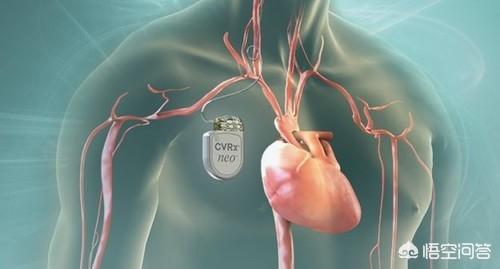
The saying "the plan of the day lies in the morning" also applies to hypertensive patients. Keeping the morning blood pressure peak under control will help stabilize blood pressure throughout the day. Therefore, many experts recommend taking long-acting antihypertensive drugs at 6-7 am to prevent the occurrence of accidents caused by a large pulse pressure difference when blood pressure rises too much during the day and falls too quickly at night.
Changes in blood pressure are not only influenced by the patient's own factors, but also related to weather changes, diet, emotion, sleep and other factors. Therefore, patients should actively cooperate with their doctors and adjust their blood pressure within a reasonable range through medication and adjustment of their own state under the guidance of doctors.
Finally, hypertensive patients should not get up too hard in the morning, otherwise the blood pressure will rise suddenly due to muscle contraction; it is not recommended for hypertensive patients to practice in the morning; and eat more vegetables and fruits in daily diet, and eat less fat, sweet and greasy food. Adjustment of high blood pressure is not a quick fix and requires patience and seriousness.
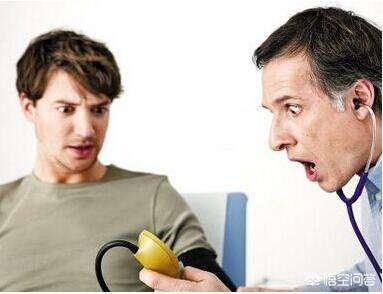
Welcome to Life Calling for more useful health knowledge.
What we usually call blood pressure actually refers to the lateral pressure of blood flowing in the arteries of the body circulation against the wall of the blood vessel per unit area. Blood pressure is not constant throughout the 24 hours of the day, but is always in a state of fluctuation. Generally speaking, normal people's blood pressure is a "spoon" curve distribution, high blood pressure during the day, low blood pressure at night when sleeping, if 24-hour ambulatory blood pressure monitoring, the average blood pressure during the day is more than 135/85mmHg is considered high blood pressure, while the average blood pressure during the night sleep state is more than 120/70mmHg can be regarded as is considered to be hypertensive.
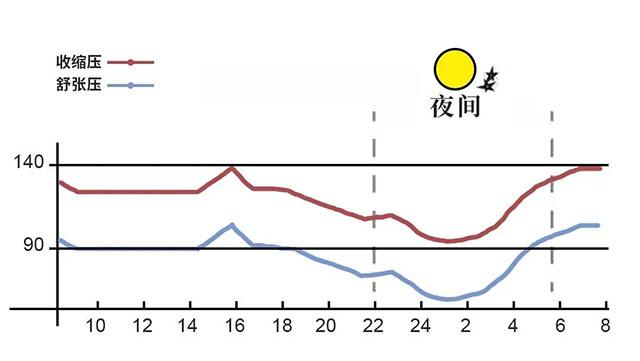
Even during the day, blood pressure is in a relatively regular state of fluctuation, with two peaks. The first peak is between 6:00 a.m. and 10:00 a.m. Sympathetic excitability gradually rises after a person wakes up, and the blood pressure gradually rises from a lower state at night and reaches the first peak. Thereafter, blood pressure begins to fall, forming a trough. After 4:00 p.m., the metabolism of human beings gradually reaches its highest level, and blood pressure rises again and reaches a second peak between 4:00 p.m. and 8:00 p.m.

Therefore, the blood pressure of hypertensive patients, in these two "peak" stage is easy to reach the highest value, in addition, there is a part of the patient's blood pressure was "anti-spoon type" distribution, the night blood pressure is higher than the daytime, most often in the presence of sleep disorders, the elderly in particular.
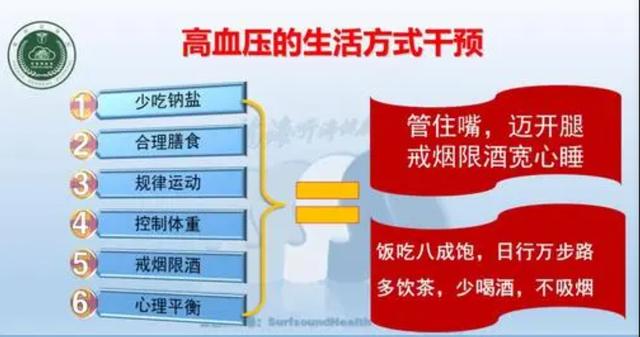
To lower and control blood pressure well, we should firstly do a good job in lifestyle management, including low-salt diet, eating more whole grains, vegetables and fruits, reducing saturated fatty acid intake, quitting smoking and drinking less alcohol, exercising regularly, controlling body weight, keeping a calm mind, ensuring sufficient sleep and so on. If you still can't control your blood pressure completely, you need to choose reasonable antihypertensive drugs according to your own characteristics, try to choose the preparation that can control your blood pressure stably for a long period of time, avoid the fluctuation of blood pressure caused by short-acting antihypertensive drugs, and choose the individualized medication plan for hypertension with different curve distributions.
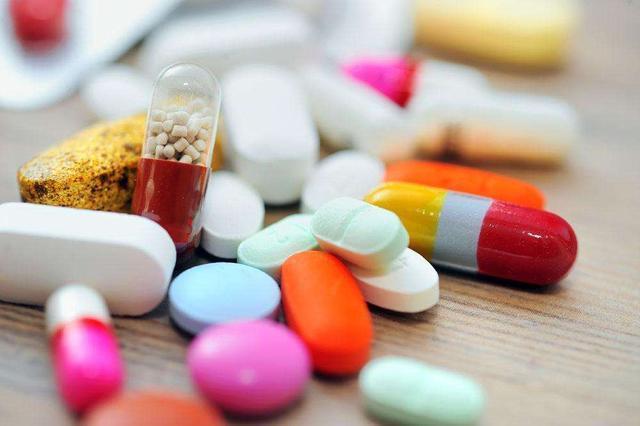
What time of day does a hypertensive patient have the highest blood pressure? For this question, there is no fixed answer, because blood pressure is affected by a variety of factors, in general, for the majority of the population, in the resting state, every day early in the morning 6-10 o'clock is often the highest blood pressure in the day, but we in the movement, emotional excitement and other triggers, can also be caused by the blood pressure rise, so that which time of day the highest blood pressure, there is no definitive answer.
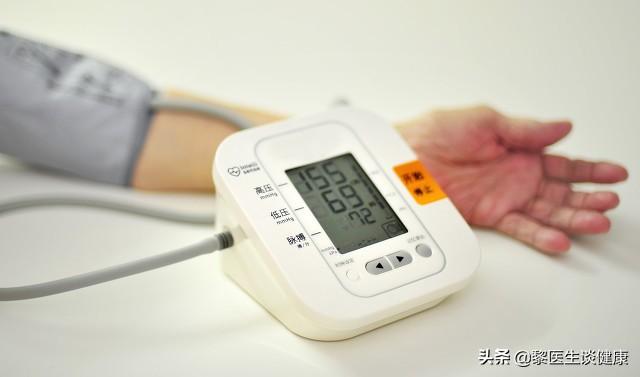
Blood pressure mainly refers to arterial blood pressure, which is the side pressure of our body's blood in the flow of blood vessels on the walls of the unit blood vessels, the level of blood pressure is affected by a variety of factors, including genetics, the environment, lifestyle and so on. Generally speaking, human blood pressure shows the performance of "two peaks and one valley", which is called "spoon blood pressure", i.e., 6 to 10 o'clock in the morning, is the first peak of blood pressure, which is often the highest time of the day, and is also the high incidence of cardio-cerebral and cerebral vascular accidents, and then the blood pressure will gradually decrease. Blood pressure will gradually decrease; in the afternoon 4 to 6 o'clock, blood pressure will gradually rise to the second peak, and then fall; in the morning 2 to 3 o'clock, blood pressure will fall to the lowest, and then show a trough. Of course, a few people's blood pressure will rise at night, which is different from the spoon type blood pressure, and we call it "anti-spoon type blood pressure".
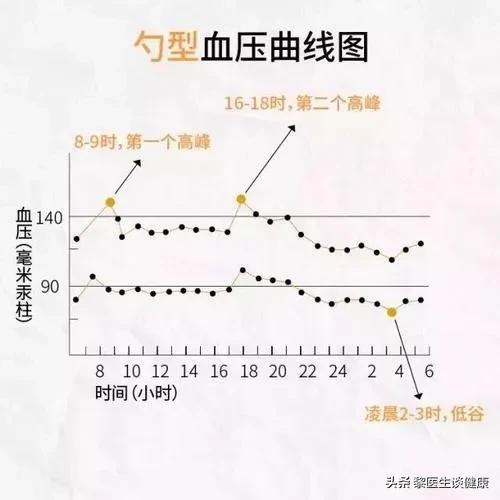
Hypertension is a very common chronic disease in our life, the number of patients is large, and tends to be younger, with the progression of hypertension, the late stage can lead to a series of cardiovascular and cerebrovascular complications, a serious threat to the health of our organism. For the treatment of hypertension, should be carried out under the guidance of a professional doctor, to fully assess the condition after the development of individualized programs, recommended lifestyle intervention combined with blood pressure-lowering drugs comprehensive treatment, adhere to the standardized treatment, the vast majority of patients can get the maximum degree of control of blood pressure, but also to minimize the occurrence of complications.

Hypertensive patients should start from their daily life, pay attention to low-salt diet, quit smoking and limiting alcohol, appropriate exercise, weight control, regular work and rest and maintain a good mindset, and under the guidance of the doctor reasonable use of medication, the drug should be individualized, preferably long-lasting preparation, in order to achieve long-term stable control of the level of blood pressure, to reduce the incidence of complications, to improve the quality of life, and to improve the prognosis. I hope that we correctly understand that hypertension is not terrible, as long as we adhere to standardized treatment, the vast majority of the population can get good control.
I hope this article can help you, if you have any questions, welcome to leave a message at the end of the article and discuss together.
This article was originally written by Dr. Lai on Health (formerly GP Sweeper).
Follow @DrLeeTalksHealth for more health knowledge.
Scientifically, anytime the systolic blood pressure exceeds 140 and the diastolic blood pressure exceeds 90, it is considered a hypertensive disorder. The body's blood pressure is a fluctuating curve, and almost every measurement over a 24-hour period is different. Know which time period your blood pressure fluctuates the most? What time period is most dangerous? It's an important thing to know.
Which time of day does blood pressure fluctuate the most? Pay attention to 2 key times of the day.
The first peak is to get up early in the morning between 6-10 a.m., this time because people after a night's sleep, the nervous system is in the state of being awakened, in this period of time the blood pressure is a rapid rise in a trend.
The second peak is between 4-7 p.m., because the afternoon is one of the fastest metabolic times of the day, during which people are usually in a rested or semi-rested state, creating the 2nd time of day when blood pressure is higher.
Peak hours of blood pressure are also associated with a high incidence of cardiovascular events such as angina, myocardial infarction, and stroke in hypertensive patients.
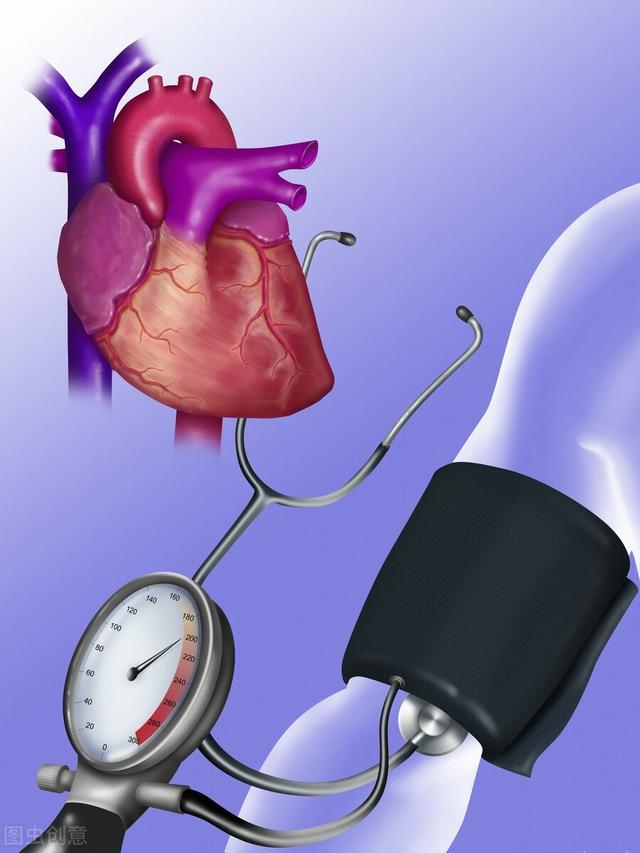
How do I pay attention to lowering and controlling my blood pressure?
Increased blood pressure can have a negative impact onIrreversible damage to blood vessels, heart, brain, kidneys, and other organs throughout the body.and it comes in subtle ways.Cardiovascular atherosclerosis, stenosis, angina pectoris, heart enlargement, heart attack, kidney failure, retinal degenerationetc.
Because each hypertensive patient has a different lifestyle, different work schedule, different co-morbidities, different antihypertensive medications, and different periods of abnormal blood pressure, they are all different.
Therefore, it is advisable for chronically hypertensive patients to carry an ambulatory blood pressure monitor thatOn the one hand, choose the antihypertensive medication and the time period for taking the medication that suits your physiology; on the other hand, check for complications and develop good habits to ensure that your blood pressure is stable throughout the day.
Blood pressure is not static, it is always changing throughout the day. There are two peaks and one trough in blood pressure throughout the day, referred to as double peaks and troughs. The first peak occurs between 8:00 and 9:00 a.m., the second peak occurs between 18:00 and 20:00 p.m., and the trough is between 2:00 and 3:00 a.m.
The saying that "the plan of the day lies in the morning" also applies to patients with high blood pressure. Keeping the morning blood pressure peak under control will help stabilize blood pressure throughout the day. Therefore, it is recommended to take long-acting antihypertensive drugs at 6-7 am to prevent the blood pressure from rising too much during the day.
Changes in blood pressure are not only influenced by the patient's own factors, but also related to weather changes, diet, emotion, sleep and other factors. Therefore, patients should actively cooperate with their doctors and adjust their blood pressure within a reasonable range through medication and adjustment of their own state under the guidance of doctors.
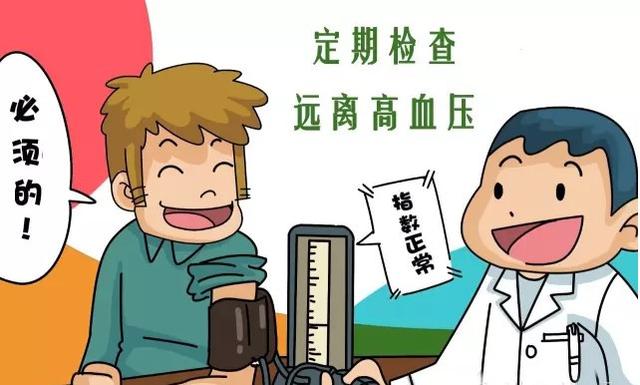
Which time period has the highest blood pressure in hypertensive patients, and how to pay attention to lowering and controlling blood pressure?
The blood pressure level of hypertensive patients is not static, but changes with time, climate, emotions and other factors. Therefore, it is important to clarify the highest point of your blood pressure to control it well and avoid cardiovascular accidents.
At what time of day does a person with hypertension have high blood pressure?
Generally people's blood pressure shows a pattern of high in the morning and afternoon and lower in the evening, the curve is like a spoon, so it is called spoon type hypertension, and the highest value of blood pressure usually occurs in the morning between 6~9am and 4~6pm. There is also a part of the patient blood pressure does not follow this law, or even the other way around, the blood pressure reaches the highest value at night, known as the rice spoon type hypertension. In addition, there are other patients whose blood pressure changes with no obvious pattern, known as non-spoon type hypertension.
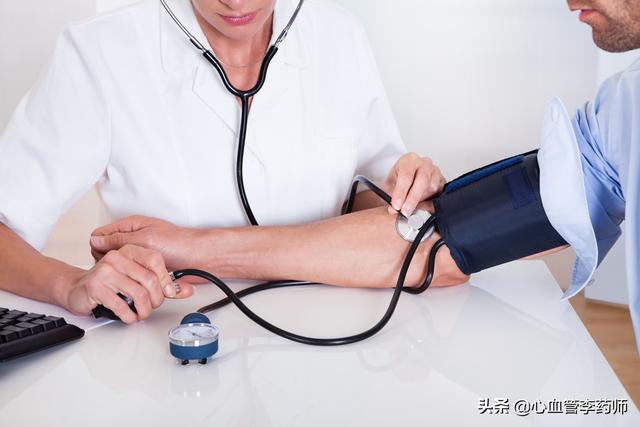
When should I measure my blood pressure?
1. When there is a disturbance in the work schedule
Many people's high blood pressure is to stay up all night. If you don't sleep well at night, the blood pressure at night will be because the sympathetic nerves can't get a better rest, and even because insomnia triggers anxiety, which in turn causes the blood pressure to rise, and it's easy to form an abnormal pattern of change in blood pressure. And this kind of damage, not the next day during the day to make up sleep can make up for it. Some people have very irregular work and rest schedules, and continuous late nights can cause a sudden rise in blood pressure. If this is unavoidable, you should measure your blood pressure in time.
2. After smoking and drinking
After smoking 1 cigarette, the heart rate will increase by 5-20 times per minute on average, and the systolic blood pressure will rise by 10-25mmHg. After smoking 2 cigarettes for 10 minutes, the heart rate will be even faster due to the increase in the secretion of adrenaline and norepinephrine, which will increase the systolic blood pressure as well as the diastolic blood pressure. Smoking a lot of cigarettes, drinking strong tea or strong coffee can also cause an increase in blood pressure, this is because nicotine, theophylline, caffeine, these substances can stimulate the sympathetic nervous system, making the heart rate faster and blood pressure rise.
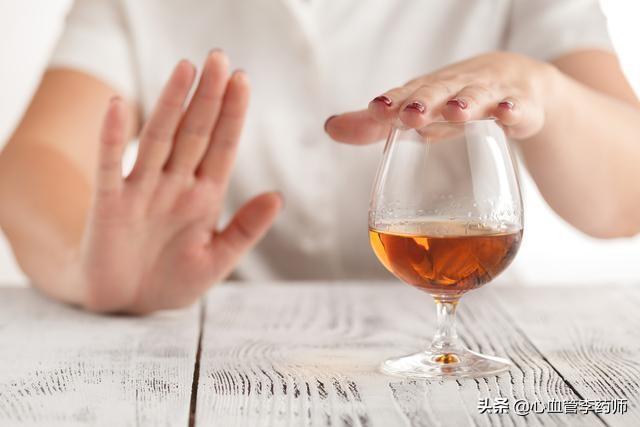
3. During mood swings
Work stress, mental tension, the body will secrete a chemical called catecholamines, this chemical can cause vasoconstriction, vasoconstriction caused by increased resistance to blood discharge, and resistance to increase, it will cause blood pressure. Such as extreme excitement, sadness, or anxiety, depression and other bad mental state can directly cause blood pressure.
4. In the event of a sudden change in temperature
Blood pressure monitoring should be strengthened when there is a change of season or a big change in temperature. Some hypertensive patients will have a sudden rise in blood pressure in winter when the weather is cold, and a sudden drop in blood pressure in summer when the weather is hot, sweating more and drinking less water.
5. In the event of an attack
Blood pressure may rise suddenly if the patient has pain or difficulty in defecation (e.g., acute urinary retention, constipation), while diseases such as acute heart failure, acute cardiac infarction, massive blood loss, severe vomiting, and diarrhea may cause a sudden drop in blood pressure.
I am pharmacist Li, every day and you talk about health, welcome to pay attention! If you still have questions about health, welcome to leave a message to consult, after seeing will be the first time to respond.
This question and answer are from the site users, does not represent the position of the site, such as infringement, please contact the administrator to delete.